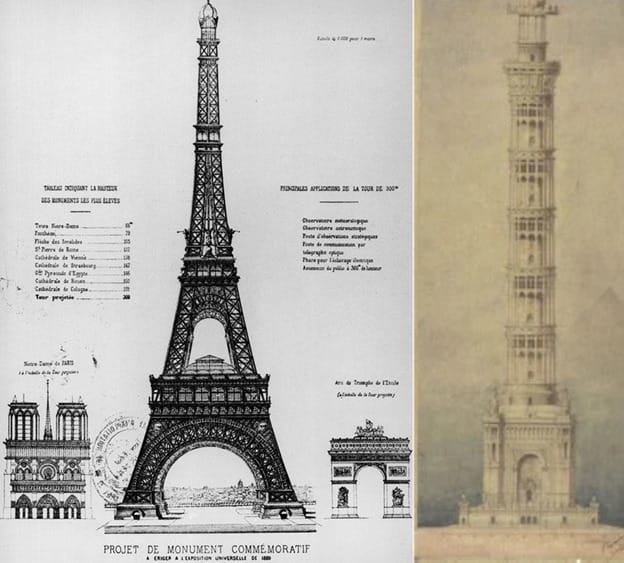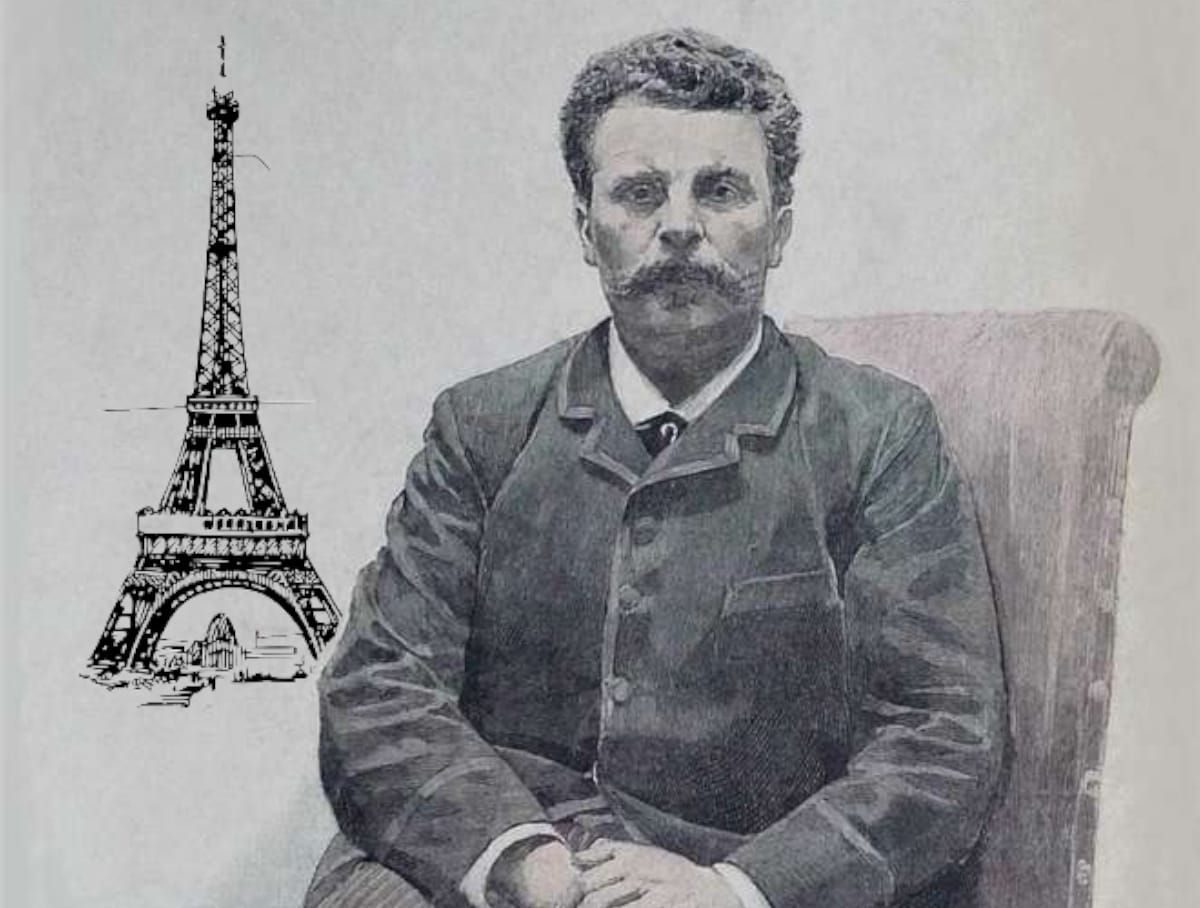The story of the French classic's witty explanation of why he constantly visited a Parisian landmark that he so disliked is widely known. We checked whether this story actually happened.
It is believed that the French writer Guy de Maupassant was one of those who were very annoyed by the Eiffel Tower erected during his lifetime. Nevertheless, he often dined at a restaurant on its first tier, explaining: this is the only place in Paris from where the building itself cannot be seen.
This story is told by many popular Russian-language sources, such as “RIA Novosti", "Satellite", "Russian newspaper", "Museum of Facts", numerous printed books about France and collections interesting facts, authoritative French publication Liberation and even official website Eiffel Tower.
The idea to build a giant tower in Paris was born several years before World's Fair 1889. The structure was to be the main attraction of the event dedicated to the centenary of the French Revolution. A design competition was announced, the favorites of which were the 370-meter lighthouse tower “Column of the Sun” made of granite and porphyry by the architect Jules Bourdet and the 300-meter metal structure by the engineer Gustave Eiffel.

Eiffel’s unusual, far from the standards of the time and utilitarian idea aroused great interest, and even Bourdais’s spontaneous decision to switch from stone to iron did not help him - the Eiffel Tower project won the competition.
However, not all Parisians, least of all the local elite, took the prospect of a huge metal structure appearing in the very center of the French capital. February 14, 1887 in the newspaper Le Temps a letter appeared “Protest of artists against the tower of Mr. Eiffel”, which contained a request to stop all construction work: “We, writers, artists, sculptors, architects, passionate lovers of the still untouched beauty of Paris, protest with all the strength of our indignant soul... In order to understand us, in essence, it is enough to imagine at least for a moment a highly absurd tower, similar to a giant, black factory smoke a pipe that presses with its barbaric mass on our humiliated and insulted monuments, on all our architecture, which has become so miniature...” Among those who signed this appeal were the writer Alexandre Dumas fils, the composer Charles Gounod, the architect Charles Garnier and the writer Guy de Maupassant.
The appeal had no effect. The tower opened to the public on May 15, 1889, caused a sensation and in the near future became the main symbol of Paris. Originally designed for 20 years of operation, it still delights guests and residents of the French capital. However, in the first years, not everyone came to terms with its existence, and, definitely, among such people there was the same Maupassant.
IN complete works The classic Eiffel Tower is mentioned three times. First, there is an article entitled “Wealth,” published in the same year of 1887 as the protest letter, and containing sharp criticism of the project. In his 1888 publication “In the Clouds,” Maupassant briefly mentions the tower in the description of his hot air balloon flight over the capital. Finally, in 1890, a book of travel notes “Wandering life" In the first essay entitled "Fatigue" Maupassant writes: “I left Paris and even France because I was too tired of the Eiffel Tower. It is not only visible from everywhere, but generally comes across you at every step: it is made of all possible materials and haunts you from all shop windows, like a persistent, tormenting nightmare. <…> There is not a single free table in restaurants, and you will not find a single friend who would dine at home or would agree to dine at your place. If you invite him, he will accept your invitation on the condition that he goes to dinner at the Eiffel Tower. It's more fun there. And everyone, as if obeying some order, invites you there every day of the week, either for breakfast or lunch. In this heat, in this dust, in this stench, in this crowd of tipsy, sweaty common people... it was still possible once or twice with disgust and curiosity to taste the concoctions of the airy innkeepers - I was ready to allow this - but I was amazed that it was possible to dine every day in such dirt and in turmoil, as did the people of good society, refined society, select society, sophisticated and prim society, whom Usually one feels sick from the mere sight of people working and smelling of human fatigue.”
As we can see, Guy de Maupassant was far from favoring the Eiffel Tower and admitted that at some point he left the city so as not to see it. In addition, he admitted the opportunity to have a snack once or twice on the tower, but was not ready to do this every day and scolded local restaurants. In one letter he tried to persuade his acquaintance not to schedule dinner at the establishment on the tower, because another it followed that he had been there at least several times. And in any case, in written sources Maupassant did not justify his visits to the tower in any way by the fact that he would not be able to see it. “Verified” did not find similar evidence in other authoritative publications related to the personality of Maupassant and published during his lifetime or shortly after his death in 1893, just four years after the completion of construction. Judging by evidence contemporaries, this was the period when Maupassant, precisely because of the Eiffel Tower, suddenly fell out of love with Paris. According to one of obituaries, the writer cursed the structure to the last and said that the ladies would rather go to dine on its first tier than go on a date with him.
Moreover, in the Google Books project, the attribution of this story to Maupassant is not found at all in the sources of the first half of the 20th century. Roland Barthes with his essay "Eiffel Tower(1964) was one of the first famous people to mention this plot; in the book by the Frenchman François Denault “Mirror of French civilization"(1938) it is also presented as a tale about a nameless tower lover. Further traces in French are lost, but suddenly appear in English. Moreover, the oldest “Verified” mention case encountered even contains a specific name. IN report The Manchester Literary Club for 1914 mentions the story of the writer William Morris, who was once asked why he spent so much time on the Eiffel Tower during his visits to Paris. To which he replied: “This is the only place where this damn thing [is not] visible.” In 1921, several English newspapers printed an extended version of the Morris story, which included mention of the now-frequent dinners. Decade after decade this tale modified in the British press, until it became not only an anecdote, but also the basis for other similar jokes - for example, about Stalin's skyscraper in Warsaw. Apparently, the story was born in Great Britain.
It’s easy to imagine why Maupassant later became the hero of this joke - he was one of the most famous haters of the Eiffel Tower, and he actually happened to dine there, although without much pleasure, judging by his notes. Perhaps the joke and the real image of the Frenchman overlapped each other. One way or another, the facts known to us do not allow us to connect the famous story about the Eiffel Tower with Guy de Maupassant.
Cover photo: Getarchive/Rawpixel
Read on topic:
If you find a spelling or grammatical error, please let us know by highlighting the error text and clicking Ctrl+Enter.






